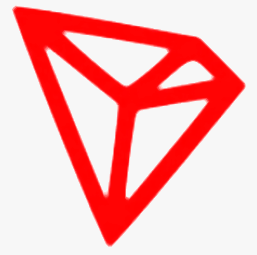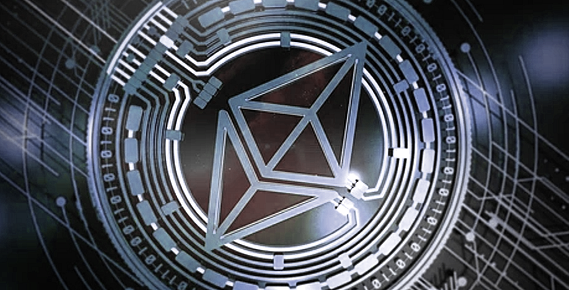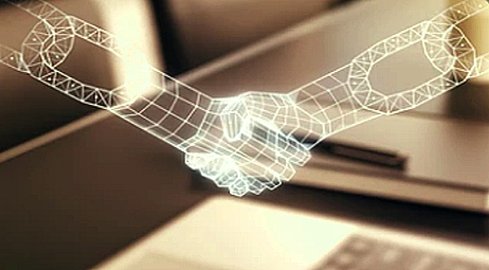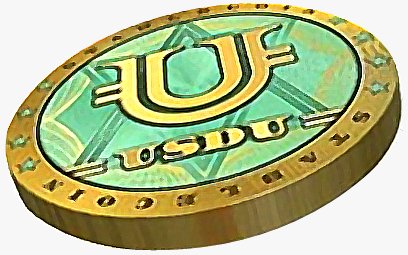Accredited InvestorsAltcoinAnatoli UnitskyAnti-Money Laundering (AML) In CryptoAPIArbitrageArtCoin TokenArticle DirectoryASICAuction Terminology GlossaryBasics of Stock Market InvestingBear MarketBest Crypto Payment Provider In the WorldBitcoinBlockchainBlockchain ConfirmationBlockchain Consensus MechanismBlockchain ForkBlockchain GlossaryBored Ape Yacht ClubBuild a Business That OutperformsBull MarketBuying SkyWay SharesByzantine Fault Tolerance (BFT) ExplainedCasascius CoinCentral Bank Digital Currency (CBDC)Centralized Crypto ExchangeCoinCoinsetCold WalletCollateralCommodity Futures Trading Commission (CFTC)Cross-Chain TechnologyCRUCrypto ExchangeCrypto GlossaryCrypto JokesCrypto Terms to KnowCrypto TickerCryptocurrencyCryptographyCryptojackingCryptounit BlockchainCryptounit GlossaryCryptounit ProgramdApp (Decentralized Application)Dead CoinDecentralized Exchange (DEX)Decentralized Finance (DeFi)Difference Between Bitcoin and EthereumDifferent Ways of Investing MoneyDigital CurrencyDistributed LedgerDo Your Own Research (DYOR)Dollar Cost Averaging (DCA)Dow Jones Industrial Average (DJIA)EncryptionERC-20ERC-721EthereumEvoScentFear Of Missing Out (FOMO)Fear, Uncertainty and Doubt (FUD)Fiat MoneyFNT Fintech CompanyGenesis BlockGlobal Unit PayGlossary of Banking TermsGlossary of Business TermsGlossary of Financial TermsHalvingHODLHot WalletHow Do I Start InvestingHow Rich is Satoshi Nakamoto?How to Create a BlockchainHow to Find Private InvestorsHow to Get Into FintechHow to Program Smart ContractsI Am Thrilled to Be a Part of This Global ProjectInitial Coin Offering (ICO)Initial Public Offering (IPO)Initial Token Offering (ITO)Innovation Basalt TechnologyInnovative Transportation TechnologiesInternational Bank Account Number (IBAN)Investing in Gold Mining StocksInvesting in Gold MiningJagerJoy of Missing Out (JOMO)Know Your Customer (KYC)LedgerLiquidity in CryptocurrencyMaker and Taker Fees in Crypto TradingMarket Capitalization (Market Cap)Meme CoinMetal Credit CardMetaMaskMillenials Now Have Access to Generational WealthMy Best Investment EverNew Digital EvolutionNFT GlossaryOff-Chain TransactionsOn-Chain TransactionsOpen Edition NFTPeer-to-Peer (P2P)Personal Loan GlossaryProbably the Best STO on the MarketProof of Stake (PoS)Real Estate Glossary of TermsReal Estate Investing GlossaryRebase TokenSecurities and Exchange Commission (SEC)Security Token ExchangesSecurity Token Offering (STO)Soulbound Decentralized Identities for Security TokensSoulbound ID Launch by Stobox Proves a SuccessSoulbound TokensStoboxStock Market GlossaryTestimonialsTether Platform and Token (USDT)UnitEx ExchangeUnitsky String TechnologiesUNTBUSDUValidatorWe Started Investing When We Were 25What are Blue Chip NFT?What are Blue Chip Stocks?What are Crypto Assets?What are Crypto Smart Contracts?What are CryptoPunks NFT?What are Digital Assets?What are Digital Collectibles?What are Gas Fees?What are Gas Wars?What are Hashmasks?What are Non Fungible Tokens?What are Non-Sufficient Funds (NSF)?What are Soulbound Tokens (SBT)?What are Stablecoins in Crypto?What are Transactions Per Second (TPS)?What are Utility NFTs?What are Utility Tokens?What Does Burning Crypto Mean?What Does Diamond Hands Mean?What Does Paper Hands Mean?What Does To The Moon Mean?What Does WAGMI Mean?What Happened to Satoshi Nakamoto?What is a 51% Attack?What is a Baby Boomer?What is a Backlink?What is a Banner?What is a Barcode?What is a Bid-Ask Spread in Crypto?What is a Block in Blockchain?What is a Block Reward?What is a Blockchain Address?What is a Blockchain Node?What is a Blockchain Oracle?What is a Blog?What is a Bond?What is a Bot?What is a Broker?What is a Business Accelerator?What is a Cash Cow?What is a Commercial Bank?What is a Commodity?What is a Con?What is a Credit?What is a Credit Limit?What is a Credit Rating?What is a Crypto Airdrop?What is a Crypto Bridge?What is a Crypto Scam?What is a Crypto Token?What is a Crypto Wallet?What is a Crypto Whale?What is a Crypto Winter?What is a Cryptocurrency Public Ledger?What is a Cryptocurrency Roadmap?What is a DAO?What is a Dark Pool?What is a Day Trader?What is a Dead Cat Bounce?What is a Default?What is a Derivative?What is a Digital Credit Card?What is a Fiscal Quarter?What is a Fungible Token?What is a Governance Token?What is a Grace Period?What is a Hard Fork?What is a Hot Wallet?What is a Hybrid Blockchain?What is a Hybrid PoW/PoS?What is a Joint Account?What is a Market Cap?What is a Merkle Tree in Blockchain?What is a Mining Farm?What is a Nonce? What is a PFP NFT?What is a POS System?What is a Prepaid Card?What is a Private Blockchain?What is a Private Key?What is a Public Blockchain?What is a Public Key?What is a Reserve Currency?What is a Ring Signature?What is a Routing Number?What is a Rug Pull in Crypto?What is a Safe Deposit Box?What is a Satoshi?What is a Security Token?What is a Seed Phrase?What is a Shitcoin?What is a Sidechain?What is a Soft Fork?What is a Spot Market?What is a State Bank?What is a SWIFT Code?What is a Tax Identification Number (TIN)?What is a Time Deposit?What is a Transaction Account?What is a Variable Interest Rate?What is a Virtual Assistant (VA)?What is a Virtual Card?What is a Virtual Currency?What is a Visa Card?What is a Whitelist in Crypto?What is a Whitepaper?What is Accounts Payable (AP)?What is AMA in Crypto?What is Amortization?What is an Accrual?What is an ACH Transfer?What is an Actuary?What is an Addendum?What is an Algorithm?What is an Angel Investor?What is an Annuity?What is an Asset?What is an ATM?What is an Atomic Swap?What is an Audit?What is an Avatar?What is an EIN?What is an Embargo?What is an Entrepreneur?What is an IDO (Initial Dex Offering)?What is an Interest Rate?What is an Internet cookie?What is an Investment Bank?What is an NFT Drop?What is an NFT Floor Price?What is an Ommer Block?What is an Orphan Block?What is an Outstanding Check?What is an Overdraft?What is Artificial Intelligence (AI)?What is B2B (Business-to-Business)?What is B2G (Business-to-Government)?What is Bartering?What is Bitcoin Dominance?What is Bitcoin Pizza Day?What is Blockchain Immutability?What is Blockchain Used For?What is BRICS?What is Business-to-Consumer (B2C)?What is C2C (Customer to Customer)?What is Capitalism?What is Catfishing?What is CFD Trading?What is Check Kiting?What is Cloud Mining?What is Communism?What is Content Marketing?What is Decentralization in Blockchain?What is DeFi in Crypto?What is Delisting?What is Depreciation?What is Digital Marketing?What is Diversification?What is Double Spending?What is Dumb Money?What is Dumping?What is Earnings Per Share (EPS)?What is Economics?What is Email Marketing?What is Equity?What is Etherscan?What is Fintech?What is Foreign currency?What is Forex?What is Fundamental Analysis (FA)?What is GameFi?What is Generative Art NFT?What is Gwei?What is Hard Currency?What is Hash Rate?What is Hashing in Blockchain?What is Inflation?What is Initial Game Offering (IGO)?What is Interest?What is Interest Income?What is Mainnet?What is Mastercard?What is Metaverse in Crypto?What is Mining in Cryptocurrency?What is Minting NFT?What is Mobile Banking?What is Money Laundering?What is NFT Alpha?What is NFT Metadata?What is NFT Rarity?What is NGMI Meaning?What is Nominal Interest Rate?What is Online Banking?What is Open-End Credit?What is OpenSea NFT Marketplace?What is Personal Identification Number (PIN)?What is Play-to-Earn?What is Polygon?What is Proof of Authority (PoA)?What is Proof of Work (PoW)?What is Public Key Cryptography?What is Pump and Dump?What is Quantum Computing?What is Refinancing?What is Retail Banking?What is Ripple?What is Sharding?What is Slippage in Crypto?What is Smart Money?What is Solvency?What is Soulbound ID?What is SSL?What is Staking in Cryptocurrency?What is Technical Analysis (TA)?What is Testnet?What is the Ask Price?What is the Better Business Bureau (BBB)?What is the Bid Price?What is the Dark Web?What is the InterPlanetary File System (IPFS)?What is the Gold Standard?What is the Lightning Network?What is the Prime Rate?What is the Sandbox?What is the Secondary Market?What is the World Bank?What is Tier 1 Capital?What is Tokenomics?What is TRC-20?What is Universal Banking?What is Unspent Transaction Output (UTXO)?What is Usury?What is Volatility in Crypto?What is Wash Trading?What is Web3?What is Whisper?What is XRP?What is Zero-Knowledge Proof (ZKP)?Who is Beeple?Who is Satoshi Nakamoto?Who is Vitalik Buterin?Why Tokenization is a Safe HavenWhy You Should Try Your Hand at Trading
What is TRC-20?
- Home
- Blockchain Glossary
- What is TRC-20?
Ethereum, Binance Smart Chain, and TRON are three highly utilized blockchains for crypto token creation and development. They utilize the ERC-20, BEP-20, and TRC-20 token standards respectively.

What is TRC-20?
TRC-20 is a technical standard used for smart contracts on the TRON blockchain network. It was created to provide a common set of rules for developers to follow when creating decentralized applications (dApps) on the TRON network.
TRC-20 allows for the creation of tokenized assets that can be traded on the TRON network. This includes digital assets such as utility tokens and security tokens.
One of the key benefits of TRC-20 is its compatibility with Ethereum's ERC-20 standard. This makes it easier for developers to port their existing Ethereum-based dApps to the TRON network, allowing them to take advantage of TRON's faster and more scalable network.
Another benefit of TRC-20 is its high degree of transparency. All transactions on the TRON network are publicly available and can be audited by anyone. This helps to promote trust in the network and its assets, as well as making it easier for developers to build secure and reliable dApps.
In addition, TRC-20 provides a number of advanced features, including support for multi-sig transactions, token freezing, and token burning. These features allow for greater control and flexibility in the management of tokenized assets on the TRON network.
TRC-20 vs ERC-20
TRC-20 and ERC-20 are both popular token standards used in the cryptocurrency space. They are used to develop and issue tokens on their respective blockchain networks, TRON and Ethereum.
TRC-20 is the token standard for TRON and is used for the creation of smart contracts and decentralized applications (dApps) on the TRON network. ERC-20 is the token standard for Ethereum and is used for the same purpose on the Ethereum network.
Both TRC-20 and ERC-20 have similar functionality, allowing for the creation, transfer, and management of tokens. However, there are some differences between the two standards, such as transaction speed and cost, as well as the overall ecosystem and community.
TRC-20 vs USDT
TRC-20 and USDT are not the same thing, but they are related. TRC-20 is a technical standard used for smart contracts on the TRON blockchain network, while USDT is a stablecoin that is built on top of this standard.
USDT, which stands for Tether, is a cryptocurrency that is pegged to the value of the US dollar. This means that for every USDT token in circulation, there is an equivalent amount of US dollars held in reserve. This makes USDT a stablecoin, as its value is not subject to the same fluctuations as other cryptocurrencies like Bitcoin or Ethereum.
Because USDT is built on the TRC-20 standard, it can be used within the TRON network just like any other TRC-20 token. This makes it an attractive option for people who want to use cryptocurrencies but are concerned about the volatility of other cryptocurrencies.
Functions that are Used in TRON's TRC-20 Implementation
TRON's TRC-20 implementation provides a set of functions that are commonly used in the development of decentralized applications (dApps) and tokenized assets on the TRON network. These functions are essential for the creation, transfer, and management of TRC-20 tokens.
Here are some of the most important functions used in TRON's TRC-20 implementation:
- Transfer: This function enables the transfer of TRC-20 tokens from one address to another.
- Approve: This function allows one address to approve another address to transfer a certain amount of TRC-20 tokens on its behalf.
- TotalSupply: This function returns the total number of TRC-20 tokens that have been issued.
- BalanceOf: This function returns the number of TRC-20 tokens that are held by a particular address.
- Allowance: This function returns the number of TRC-20 tokens that have been approved for transfer by one address to another.
- TransferFrom: This function enables the transfer of TRC-20 tokens from one address to another, subject to the approval of the original token holder.
- Burn: This function allows TRC-20 tokens to be destroyed, reducing the total supply of tokens in circulation.
These functions are critical to the functionality of TRC-20 tokens on the TRON network and are used in the development of a wide range of dApps and tokenized assets. By providing a common set of rules for token development, TRC-20 helps to promote the growth and innovation of the TRON ecosystem.
Related Articles

ERC-20
ERC-20 is the technical standard for any token supported by the Ethereum network.

Ethereum
Ethereum is a decentralized global software platform based on blockchain technology. It is internationally known for its own cryptocurrency, ether (ETH).

dApp
Applications known as dApps (Decentralized Applications) operate on a blockchain network, which is a distributed computing technology.

What are Crypto Smart Contracts?
Smart contracts are programs that run when specific conditions are met and are stored on a blockchain. They are used to automate the execution of a contract so that all players can be certain of...

What are Stablecoins in Crypto?
Stablecoins are digital currencies that are pegged to a "stable" reserve asset, such as the US dollar or gold. Stablecoins are intended to lessen volatility in comparison to unpegged cryptocurrencies.
- Home
- Blockchain Glossary
- What is TRC-20?